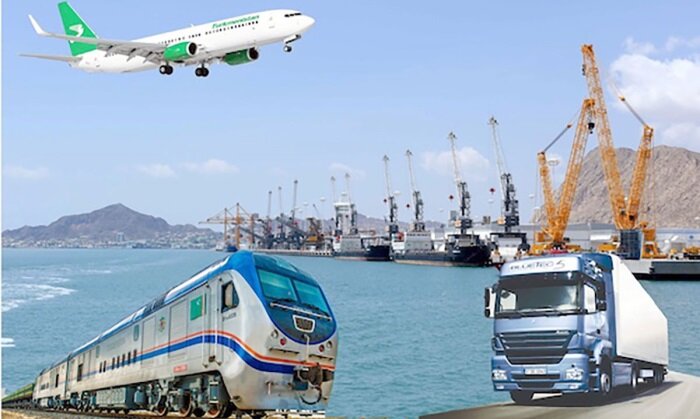An expert Kudryats believes that now it is too much to hope for China’s assistance in developing transport infrastructure and accelerated freight flows.
 Before the outbreak of the coronavirus pandemic, China sought to increase its exports annually. The ambitions of the Celestial Empire reached a new level more than ten years ago. It is no longer enough for Beijing to ‘just deliver’ to Russia, some European countries and the United States. The new goal is to fill a market of 4 billion people with its goods.
Before the outbreak of the coronavirus pandemic, China sought to increase its exports annually. The ambitions of the Celestial Empire reached a new level more than ten years ago. It is no longer enough for Beijing to ‘just deliver’ to Russia, some European countries and the United States. The new goal is to fill a market of 4 billion people with its goods.
The scale of planned exports required creating transport corridors and developing routes of transportation in the shortest possible timeframe. The ‘new Silk Road’ provides for the transportation of goods by land and by sea across the Pacific, Indian and even Atlantic oceans. As for land transportation, China is targeting several directions, a significant portion of which must run through the CIS states.
Beijing understood that the infrastructure in some Central Asian states was not ready for transit transportation, including the expedited passage through border checkpoints. Some sections simply lack the necessary number of temporary warehouse buildings, high-speed roads, machinery and equipment to ensure the fastest customs clearance. Some border checkpoints are not designed for the accelerated flow of goods.
The desire to win the lion’s share of the foreign market, multibillion-dollar profits and influence on some countries participating in the future Silk Road Project turned out to be stronger than the above nuances. China has made it clear that the key players in the transport corridors will be assisted in building and modernizing infrastructure.
In 2018-2019, before the outbreak of the pandemic, high-ranking politicians from a number of Central Asian republics discussed the aspects of beneficial partnerships with Chinese officials. The ‘Silk Road’ was a key topic under discussion between the leaders of these countries and the authorities of the Celestial Empire. Who doesn’t need investments in the transit transport sector? The pandemic has made tough adjustments. Economic recovery, the number of sick people, the ‘coronacrisis’ – this is what hits the headlines in the media of these republics. The editors of CentralAsia.news requested that an independent expert Yevgeniy Kudryats comment on the current state of the project in terms of prospects for the Central Asian republics – the CIS members.
The threat of failure and urgent tasks
The pandemic had significantly complicated the implementation of the Silk Road Project, he said.
“Where once we could speak about small ‘clouds’, now we are talking about a ‘storm front’. Investment began to fall before the pandemic, however, now we can safely speak of an economic downturn. The Silk Road Project, in fact, is under threat of failure,” the expert believes.
Kudryats reminded that many projects had been suspended in Sri Lanka, Indonesia, Malaysia, Myanmar and other participating countries. He hopes that the Silk Road Project will be implemented in full after the pandemic ends.
It was difficult during the pandemic to make predictions about the implementation of the Silk Road Project, the interlocutor said. It all depends on the ability of the Central Asian states to get out of the ‘coronacrisis’ in economic terms. Kudryats supposed that financial difficulties would force to postpone the project and address challenges that were more urgent.
According to the expert, China used to focus on Uzbekistan, but the situation had changed radically during the pandemic. As for Kazakhstan, it no longer has euphoria about the Celestial Empire.
Kudryats said it was too early to talk about China’s assistance to the Central Asian states under the Silk Road Project. Beijing remains very interested in the project, but the Celestial Empire is facing big problems created by the pandemic that are of higher priority.






